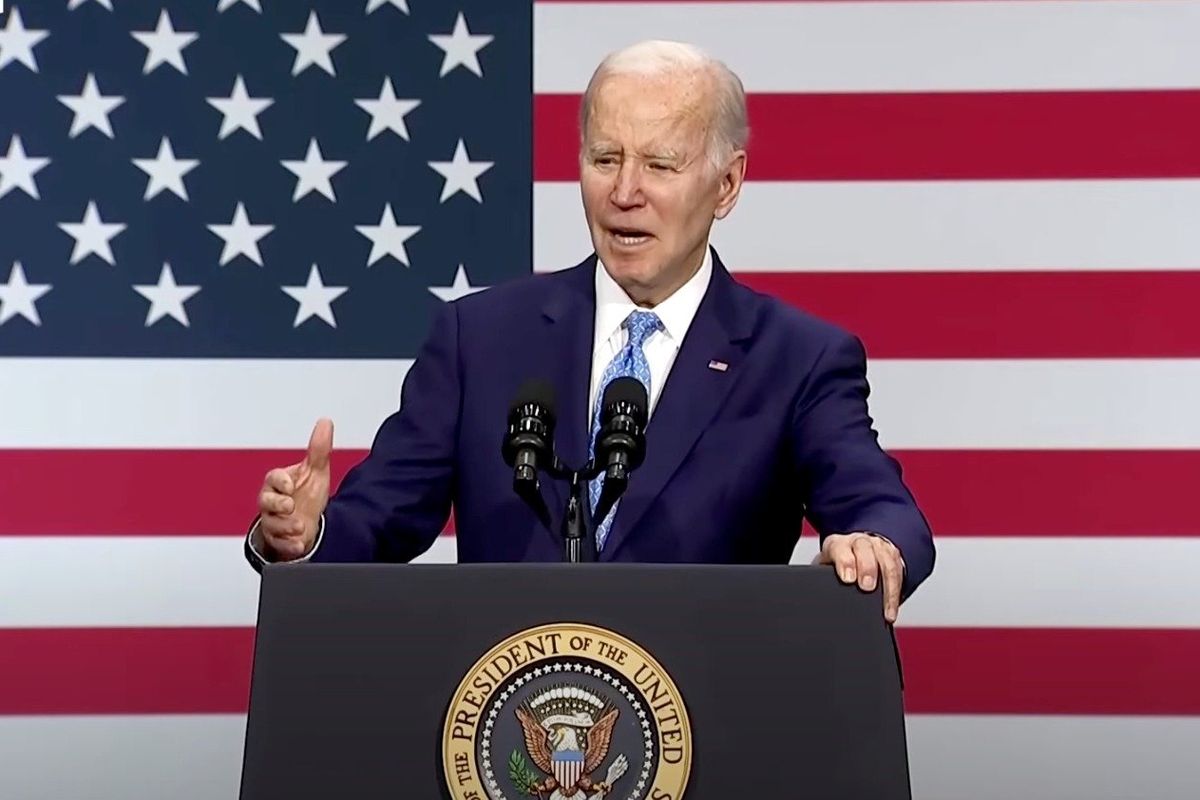
President Joe Biden
New York Times political analyst Nate Cohn made an astute observation about a new Times/Siena poll, which showed President Joe Biden trailing Donald Trump in most battleground states.
"If there's any consolation [for Biden], it's that the poll is also littered with evidence that folks aren't super tuned in, and disengaged voters remain Biden's weakness," Cohn tweeted.
It's an insight that will likely define the presidential contest moving forward.
In the survey, for example, just 29 percent of registered voters said they are closely following the legal cases against Donald Trump. That means that less than one-third of voters are paying "a lot of attention" to the ongoing trial of a former president who will almost assuredly be the Republican nominee in the 2024 election.
The ancillary to Cohn's observation is that Biden performs better among high information, high propensity voters—or likely voters—a point veteran Democratic strategistSimon Rosenberg has been making for weeks now. A pattern has begun to emerge where Biden performs increasingly better as polling models move from "adults" to "registered voters" to "likely voters."
Rosenberg cites a recent Ipsos poll for ABC News, where Biden trails Trump among adults, 44 to 46 percent, but bests him by a point among registered voters, 46 to 45 percent. And Biden takes a four-point lead among likely voters, 49 to 45 percent. A Marist poll for NPR and PBS NewsHour made a similar finding, with Biden running just two points ahead of Trump with registered voters, 50 to 48 percent, but opening up a five-point lead among likely voters, 51 to 46 percent.
John Della Volpe, director of polling at the Harvard Kennedy School Institute of Politics, made the same observation about voters ages 18 to 29 in the Siena battleground poll. Among registered youth voters, Biden trails Trump by three points, but among likely youth voters, Biden leads by seven points—a net turnaround of 10 points in the direction of Biden.
"Takeaway: the more you know; the more you vote; the better Biden does. It’s not complicated," he tweeted.
In an interview with Greg Sargent on "The Daily Blast" podcast, Biden pollster Jefrey Pollock said undecided voters make up anywhere from 10 to 15 percent of the electorate depending on the state, "which is actually rather large." Those voters are disproportionately young, Black, and Latino.
The Siena poll also included about 20 percent of respondents who either didn't vote in 2020 or who did vote in 2020 but skipped the 2022 midterms.
Both sets of voters—the undecided and the lower propensity voters—are voting blocs that the Biden campaign will be targeting to make up ground in the final months of the election.
Pollock cited Nevada where, every two years, about 25 percent of the electorate consists of voters who have never before cast a ballot in an election.
"That's what makes Nevada so interesting and challenging but also as movable as it is," Pollock explained. "You've got these voters who don't really pay attention to politics, who are just getting into the political scene."
They are going to pay attention to the election much later, Pollock said. "You have to force your way into their lives," he explained, because they are more concerned with their kids’ activities, making sure they have health care, and simply paying their bills.
"We have to force them to pay attention to politics. It's why advertising and campaigns mean so much, particularly in those closing months, because we really do have to find ways to get into those houses," he said.
Biden certainly has the resources and the campaign to help address that information deficit, but whether or not his campaign manages to reach and persuade those voters remains to be seen.
As former Obama White House Communications Director Dan Pfeiffer wrote in his "Message Box" substack: "My main takeaway from the [Siena] poll is that the more voters know about Biden and Trump, the better it will be for Biden."
Reprinted with permission from Daily Kos.








